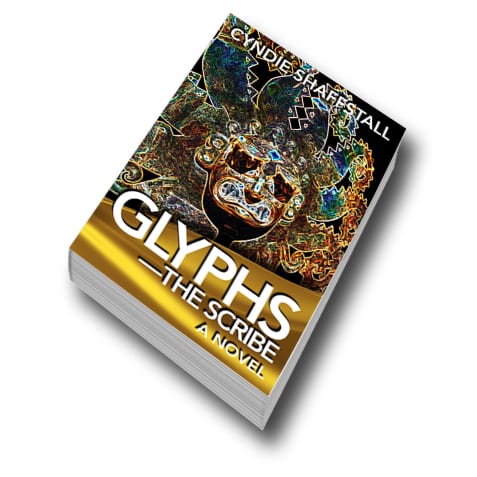 Reviewers Needed
Reviewers Needed
If you are interested in reviewing this novel before publication, please complete the request form to receive a review copy—while supplies last. (Adult content)
Summary
Ancient astronaut theorists suggest visitors from other planets inhabited South America long before the Inca conquered the Wira people, and that Wiraqucha, the creator god, was a sky traveler. Regardless of his origin, he loves his creations and will not destroy them. Instead, he has appointed allies to protect them so he can continue his explorations. Now his allies—honored as gods—are returning to their home in the heavens as well. Earth and its people will be left to their own devices.
The scribe of the Temple of the Sun sits with the gods so she can record their story—and the history of the Wira Empire—lest it be forgotten by their descendants,
Pascac, son of a god, leads a group of the Wira people to settle Sacsayhuaman overlooking Qusqu. Despite their will to live and prosper in their new home, those things may not be within their grasp. Supay, the god of death, and other gods rage against them—seemingly intent upon wiping out the entire civilization and those who rule them.
Introduction
From the viewpoint of a female narrator, this is a story of the Wira—the people who preceded the Inca in Peru. She is a scribe of the Temple of the Sun and draws the glyphs of the language of the gods, which of course, flies in the face of the idea the Wira had no written word. I like to believe there was writing in the beginning, and it has been lost and that is the point where the story begins.
Writing about a people who have not left behind a written history turned out to be a bigger challenge than I imagined, but there are many truths in this book—at least from someone’s point of view. The story of the Wira and Inca people is one of legend passed through the generations on the basis of memory alone. The khipu, a rope to which hundreds of colored strings hang, was a mnemonic device accountants, or khipu camayocs, used to recall the numeric details of stories, but its usefulness in storytelling as an art is debatable. Very few khipus survived the invasion of the Spanish, who destroyed them as pagan tools.
There are also many things probably not true, or perhaps incongruent with timelines suggested by archeologists. For instance, it is estimated Machu Picchu was built in 1450, but in my story it predates that by 250 years or so, and is the resting place for the second emperor of Qusqu.
Still, there are some things we do know with fair certainty: the Wira honored many gods, and for most, Inti was their primary god; animals and children were sacrificed, but we don’t know when that began, or why—though recent archeological finds are beginning to provide answers to these questions; the Wira and/or Inca performed (sometimes multiple) brain surgeries on people who continued to live; and the mit’a system was primarily responsible for the success they enjoyed as a race before the arrival of the Spanish conquistadors.
In some legends, Wiraqucha was the creator of the giants, but in others, it was Paricia, and Wiraqucha followed him. I chose the latter version because my story is also influenced by theories that the people the Wira were honoring as gods, were visitors from other galaxies. One thing I learned while researching is that sometimes the Inca represent Wiraqucha as a white man with a beard—this started me thinking that perhaps someone from Europe actually sailed to what is now Peru and the natives assumed he was a god. The idea of stumbling upon an unknown people and being revered as a god has been the basis for many stories, but one I chose not to use for mine. I should also note, other experts believe this is a change to the Wira and Inca story provided by the Spanish—but five hundred or a thousand years later, who can say for certain?
I tried to use the Quechuan[1]—the language of the Wira—name or word where possible, and avoided the Anglicized versions since these were translations provided by the Spanish after their invasion of Peru. The difficulty here is that there are many, if not hundreds, of dialects of Quechuan, so even the modern-day Inca do not agree on names and words. Great examples of this are Mamaquilla, or as used here in the book, Mama Killa, goddess of the moon, Qusqu (Cusco), Manqu Qhapaq (Mano Capác), and Wiraqucha (Viracocha).
I have a friend who is of Inca descent and he is adamant the Inca did not partake in human sacrifice. His assertion is becoming less likely given the discovery of the children of the mountain, as is described herein. So far though, evidence points to less-violent forms of sacrifice, especially when it came to children, than those practiced by their neighbors to the north. In my story, sacrifice makes its way into the empire, but their gods did not invite it or tolerate it—I leave to you the reader, to decide why it was adopted at all. It’s a tiny hint at a conspiracy.
I spent two weeks hiking through the mountains, rain forests, and deserts of Peru and it was likely the most influential event of my life. Standing at the stones of Sacsayhuamán—and other Wira and Inca ruins—was sobering, to say the least. I hope you get to visit these places one day and experience them for yourself, but if not, perhaps you’ll feel as though you have by the time you’ve finished The Scribe.
[1] Click here for a glossary of terms, as well as a cast of characters, and a calendar and timeline.
